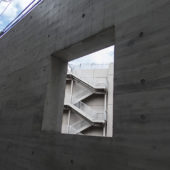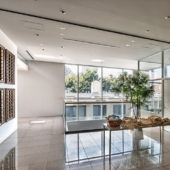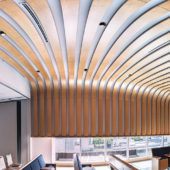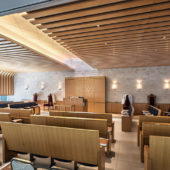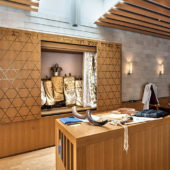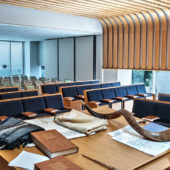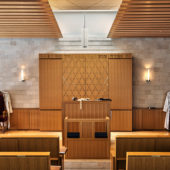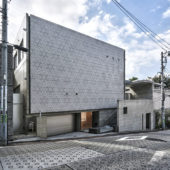An egalitarian congregation homed in a synagogue designed by a world-class architect.
It is thought that the first Jews came to Japan in the 16th century. It is believed they were descendants of Spanish and Portuguese Jews who were fleeing the Inquisition on the Iberian Peninsula. More Jews came to Japan when the country opened to the world in the late 1850s.
Although Japan was a member of the Axis powers during World War II it was a relatively safe place for Jews fleeing the Holocaust. A 1938 Japanese government resolution prohibited the expulsion of Jews from Japan. Chiune Sugihara, Japanese Consul in Lithuania, issued visas for Jews fleeing the Holocaust, sending them to Japan and the Dutch West Indies, which was controlled by Japan. Japan resisted German pressure to institute Anti-Semitic policies. After WWII, many of the country’s Jews emigrated to Israel and the United States. However, there remain significant Jewish communities in both Tokyo and Kobe.
The Jewish Community of Japan was established in 1953. In 2008 the original 1953 building was torn down and in September of 2009 the new building, designed by Maki and Associates, was dedicated. Mr. Fumihiko Maki is a world-class architect, winner of the Pritzker Prize (the “Nobel Prize” of architecture ), the Wolf Foundation of Israel prize for architecture, the Praemium Imperiale, Japan’s highest accolade for architecture, plus many other prestigious awards. One award of particular note for a Japanese architect is the BCS Award, which recognizes a combination of high construction quality, good design, and client satisfaction. Maki and Associates has been fortunate to be honored with this award 14 times.

